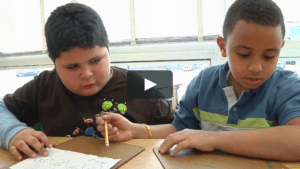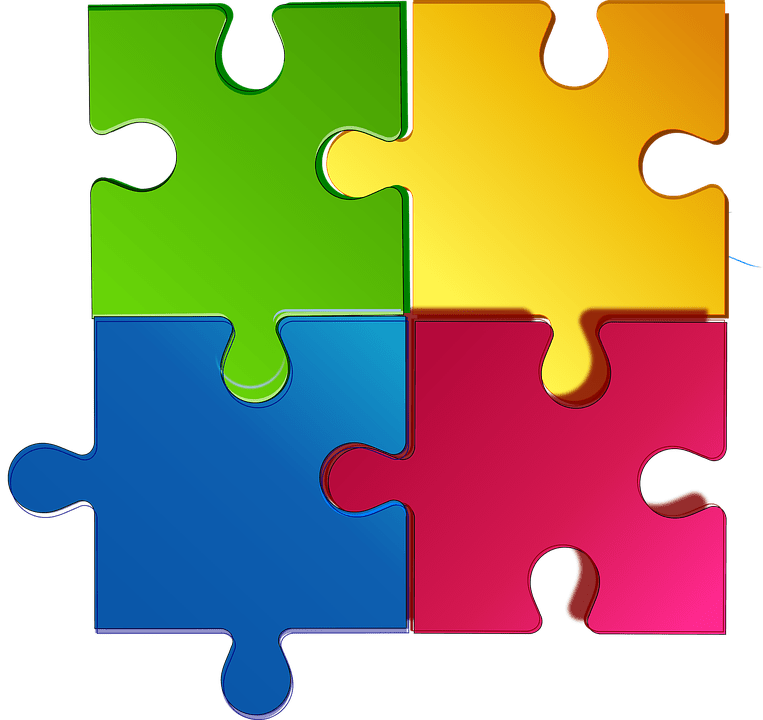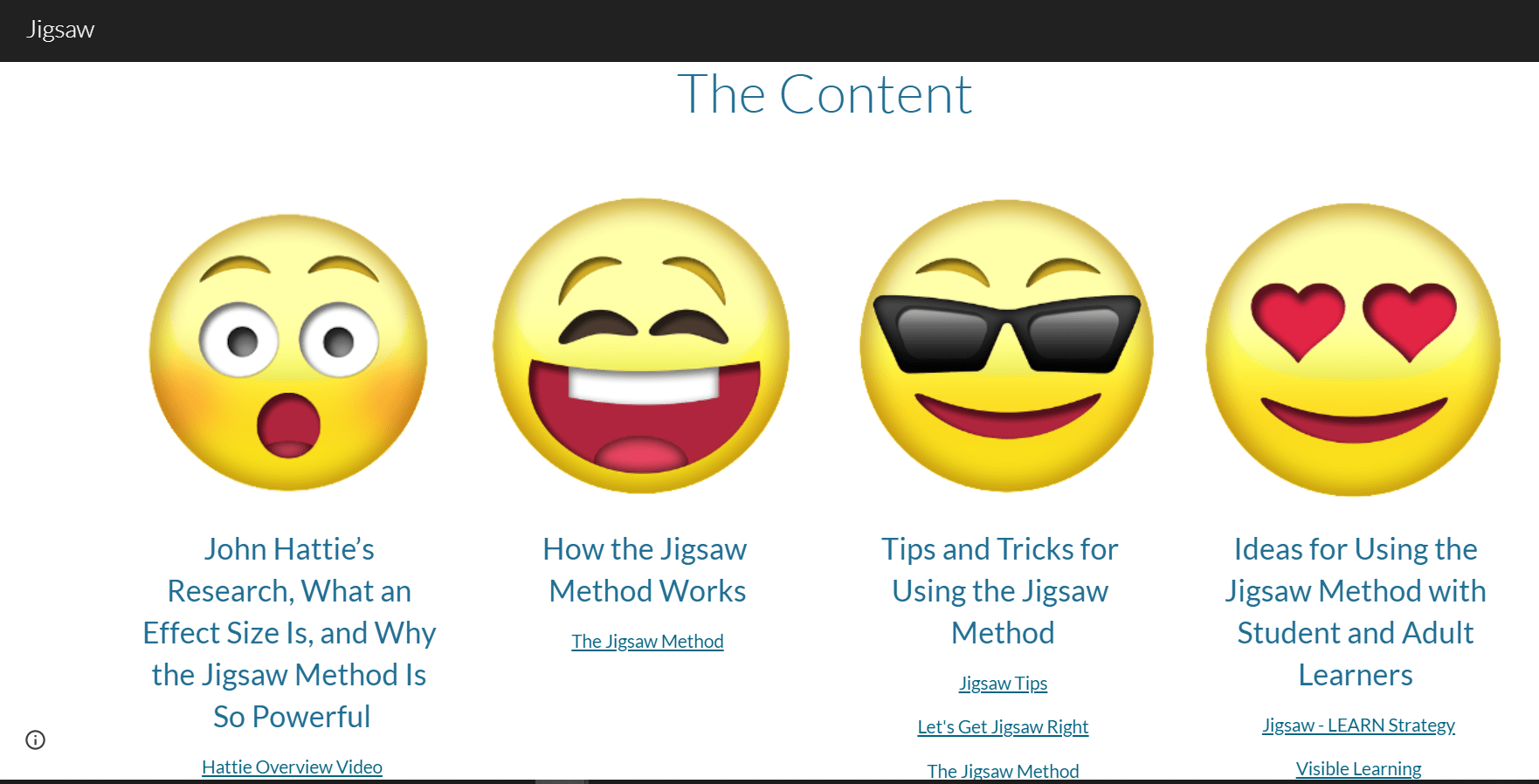As educators, we are always looking for the best ways to help our students learn. Whether it’s a different instructional strategy or a new tech tool, we want to know that what we are spending our time on is worthwhile and will accelerate learning and retention. If you’ve been following TCEA for the past year, you’ll know that we have embraced the work of John Hattie to help us determine what truly works in education. In this blog, we’ll look at one of the most powerful (and easy to implement) strategies that his research shows we should be using: the jigsaw method.
Why the Jigsaw Method Matters
Hattie’s research is based on 25 years of work and more than 1,500 meta-analyses of 90,000 studies involving more than 300 million students. That’s true validity. He examined all of the instructional practices that we use in education and rank ordered them based on their effect size. “Hattie found that the average effect size of all the interventions he studied was 0.40.” (Source)
So we know that an effect size of 0.4 means an average year of growth/learning for a student. The jigsaw method, however, has an effect size of 1.20, which means that if it’s done correctly and regularly, students will grow three years in the space of that one year. That’s powerful!
The method also has other benefits, including (source):
- Direct engagement by the students with the material to be learned instead of having material presented to them, which fosters depth of understanding
- Practice in self-teaching, which is one of the most valuable skills we can help them learn
- Practice in peer teaching, which requires them to understand the material at a deeper level than students typically do when simply asked to produce on an exam
- Improvement in social-emotional learning, including increased feelings of autonomy, competence, and intrinsic motivation (Hänze & Berger, 2007)
- Speaking the language of the discipline and thus becoming more fluent in the use of discipline-based terminology
- Contributing to the group
- Encouraging cooperation and active learning and promoting the valuing of all students’ contributions
How to Jigsaw
The jigsaw method is based on the idea that students learn best when they have to teach others. Before the process can begin, the teacher must first examine the content that the students are to learn and divide it up into manageable chunks. In an ideal situation, there would be four, five, or six sections of material that must be studied. The number of sections determines the size of the groups for the rest of the work as each student in a group takes responsibility for teaching one chunk to the rest of the group.
- Divide students into groups. These will be the Home Groups. Groups should be diverse and set by the teacher, at least while students are learning the process. Jigsaw works best if there are the same number of students in each group.
- Assign one chunk of content to each person in the Home Group. You can do this by having them count off or by drawing straws or even, once they’re familiar with the process, by letting the students pick the chunk they want to be responsible for.
- Provide the content to the students (more on what that can look like later) and allow them time to individually and silently study it.
- Have the students now move to meet with their Expert Groups. This is where all of the students with the same chunk of material gather together to better master the content. They compare their ideas about the content and then, as an Expert Group, prepare a visual aid to use when they return to their Home Groups to teach. The visual aid can be notes, a graphic organizer, a drawing, a presentation, or anything they want. But they all work on it together to ensure that critical information about the content is included and is clear.
- Students now return to their original Home Groups where each student takes a turn presenting his/her chunk. The other students listen carefully and should take notes or use a graphic organizer to jot down ideas. Questions are encouraged.
- To ensure that metacognition about the whole, and not just individual, expert learning, students meet one more time in their Expert Groups to discuss the whole content in light of their specific chunk of material.
- Students are now individually assessed on all of the chunks to see if there are any gaps or misconceptions in the content learned. This can be for a grade or just for the teacher’s knowledge.
Adding Technology
Technology offers a powerful way to provide chunked content in this method. Here’s an example I use when I am teaching people how to do the jigsaw (by jigsawing, of course). I have four chunks of content for them to learn and so there are four people per group. In their Home Groups, each person draws an emoji from laminated examples I set out and each emoji then corresponds to one chunk of the material. (I don’t show them the corresponding emojis until after they’ve drawn their own.) All of the content is posted on a Google Site for them to access, including text, websites, and video clips. They can then work through their content as they need to. If I see that there is confusion about an idea, I can add clarifying content to the Site that they can access as we work.
You can also encourage students to use technology to create their Expert presentation/notes. Some Expert Groups might want to create a paper slide or a screencast or quick video, as well as the more common Google Drawing, PowerPoint, or graphic organizer. Allow them to choose how they will share their learning; it’s more powerful that way.
Other Jigsaw Tips
If you don’t have the right number of students to evenly divide the groups, you can assign two students in one group to the same chunk of content to be learned. This may also help when you have a weak or struggling student who could use a little help.
If you have a student who doesn’t seem to want to take ownership of his/her content, you can use the Jigsaw II method. It’s exactly the same as the Jigsaw I method listed above, but does add one step at the end regarding the assessment. In Jigsaw I, students are assessed individually and receive just one score. In Jigsaw II, they still receive an individual score. But they also receive a second score that is the average of the group’s score. This builds in competition between groups and individual group peer pressure to perform at their highest level.
There’s also a Jigsaw III with time given for the Home Groups to review each other before the assessment and a Jigsaw IV where the teacher begins the unit of study by introducing the material (but not teaching all of it!).
Interested in learning more about the jigsaw method and how it can accelerate student learning in your classroom? Join us for a free-to-members webinar on January 15, 2020 at 11:45 a.m.
The jigsaw method is one of the most powerful learning strategies you can use as a classroom teacher or professional development provider. I would recommend you try it once a week in your classroom. And please feel free to contact me with any questions about it or if you would like more information. Remember, with TCEA, you’ve got this!


